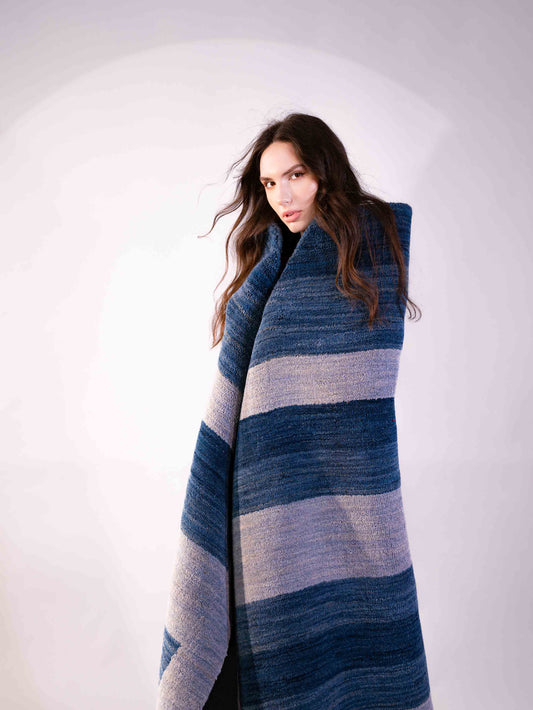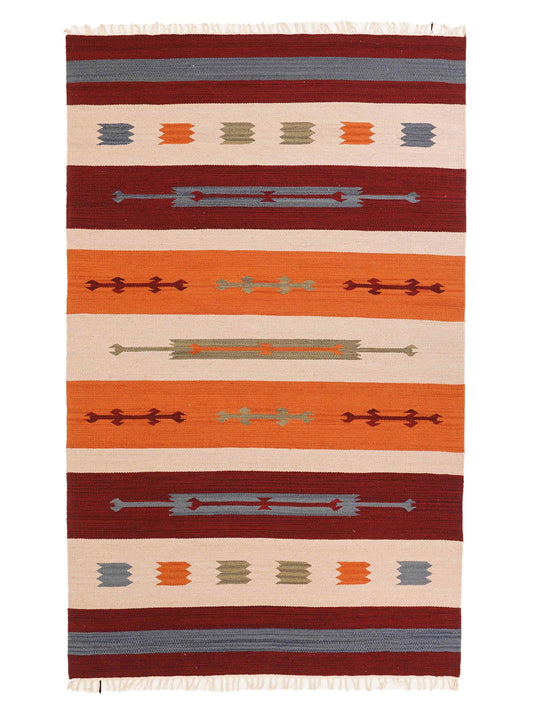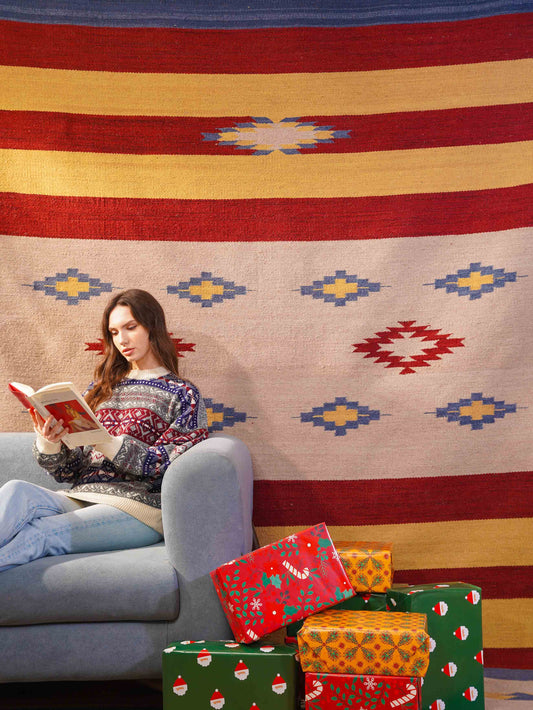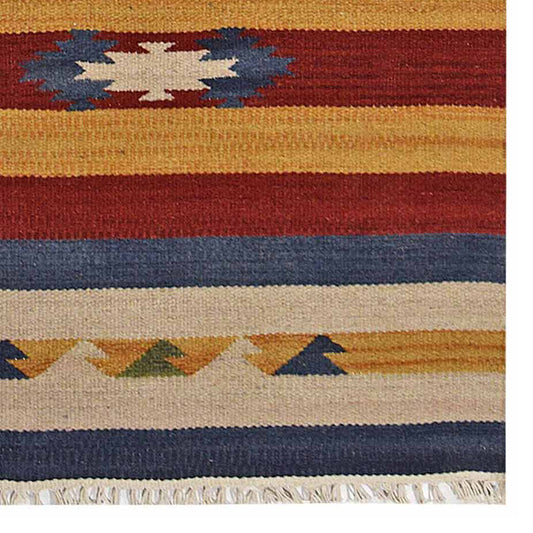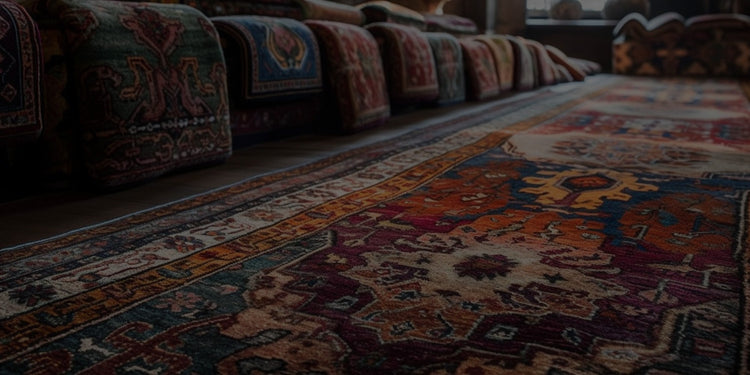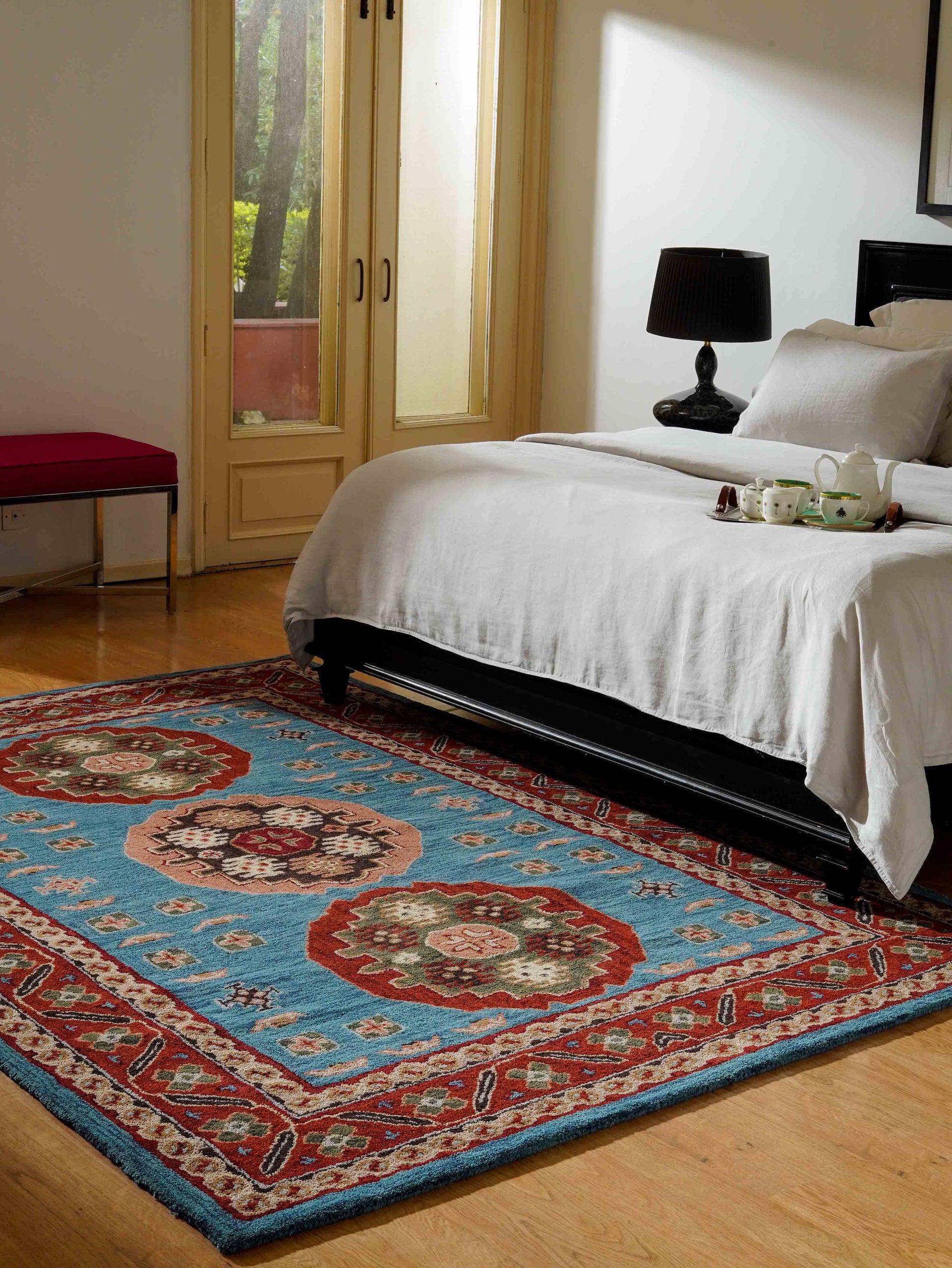History of Rugs – Rug weaving is one of the oldest known art forms to human civilization. The oldest Rug ever known is almost 2500 years old. But still origin of Rug is a mystery. The debate on the hows’ & whys’ of early Rugs’ coming into being, is ongoing & interesting.
A simplified explanation can be found in the ‘Little brown guide to rugs’ by ‘Enza Milanesi’ – this guide proposes two theories. The first theory suggests a practical purpose behind the invention of rugs – The protective cloak – The thickly knotted rugged piece of protection that served as a friendly & more comfortable surface to rest on, rudimentary tents & a weather-shield protecting the early nomads in many ways. Woven on a vertical loom - for easy dismantling and transportation, these rugs also saved valuable live-stock of our ancient wanderers to serve their owners longer & yield more than just hides. Rugs, as we know today, have evolved from rudimentary forms of floor coverings & tents that served as a canvas for human creativity, our need to differentiate, mark territory, establish superiority - to weave the story of our evolution.
The advocates of the second theory believe in the early dawn of knotted rugs, but choose to place it on our historic time-line, after the nomads settled in agricultural colonies. They tout the purpose of these rugs as both artistic & utilitarian in equal proportions.
This theory believes in rugs being an essential part of early homes, that became more important during festivals & ceremonies – owing to the artistic value ‘weaved-in’ they slowly became an essential part of self-expression & status in early civilizations.
With time the art of Rug-making has evolved into different weaving styles, techniques, using different raw materials (read on the ‘Rugs’ Bible’ for more details) In contemporary urban lifestyle, Area Rugs are an important element of interior décor, bringing style, color & personality to our home interiors.
Please read the complete Rug Bible to help you make an informed & wise rug-purchase.
Popular Products
16 size options
Irkutsk Premium Hand Knotted Wool Rug
- Blue
Free Shipping & Free Returns
No reviews
Product DescriptionSet your home surroundings enlightened with this wool rug in many shades of blue light blue, which is Hand knotted by the expert weavers to ensure its perfect finish and amazing look. The Contemporary pattern of this rug adds more elegance to your...
- From $89.00
$356.00- From $89.00
- Unit price
- / per
Save $267.00 Off
- Blue
2 size options
Metro Hand Woven Rug
- Multicolor
Free Shipping & Free Returns
No reviews
Product DescriptionThe charm and beauty of this multicolor shaded hand woven flat weave kilim wool rug can add beauty to your interiors. Don’t blame yourself for feeling compelled to select it up for your home décor. Its elegant soft wool stuff, great finishing, high...
- From $89.00
$356.00- From $89.00
- Unit price
- / per
Save $267.00 Off
- Multicolor
16 size options
Zenith Hand Woven Rug
- Multicolor
Free Shipping & Free Returns
No reviews
Product DescriptionRavel up the décor of your home interior settings with this hand woven flat weave kilim wool rug in the shade of multicolor. The contemporary pattern of this amazing rug has been planned by the seasoned artisans keeping in mind the contemporary trends....
- From $89.00
$356.00- From $89.00
- Unit price
- / per
Save $267.00 Off
- Multicolor
Popular Products
16 size options
Irkutsk Premium Hand Knotted Wool Rug
- Blue
Free Shipping & Free Returns
No reviews
Product DescriptionSet your home surroundings enlightened with this wool rug in many shades of blue light blue, which is Hand knotted by the expert weavers to ensure its perfect finish and amazing look. The Contemporary pattern of this rug adds more elegance to your...
- From $89.00
$356.00- From $89.00
- Unit price
- / per
Save $267.00 Off
- Blue
2 size options
Metro Hand Woven Rug
- Multicolor
Free Shipping & Free Returns
No reviews
Product DescriptionThe charm and beauty of this multicolor shaded hand woven flat weave kilim wool rug can add beauty to your interiors. Don’t blame yourself for feeling compelled to select it up for your home décor. Its elegant soft wool stuff, great finishing, high...
- From $89.00
$356.00- From $89.00
- Unit price
- / per
Save $267.00 Off
- Multicolor
16 size options
Zenith Hand Woven Rug
- Multicolor
Free Shipping & Free Returns
No reviews
Product DescriptionRavel up the décor of your home interior settings with this hand woven flat weave kilim wool rug in the shade of multicolor. The contemporary pattern of this amazing rug has been planned by the seasoned artisans keeping in mind the contemporary trends....
- From $89.00
$356.00- From $89.00
- Unit price
- / per
Save $267.00 Off
- Multicolor
America's Best Handmade Rugs Store!
A Tapestry of Time & Fascinating History of GetMyRugs
From ancient civilizations to modern-day masterpieces, explore the cultural tapestry that weaves these beautiful floor coverings into the fabric of human heritage. Discover the fascinating stories, intricate designs, and enduring craftsmanship that have adorned palaces, homes, and sacred spaces for centuries.
A Tapestry of Time & Fascinating History of GetMyRugs
From ancient civilizations to modern-day masterpieces, explore the cultural tapestry that weaves these beautiful floor coverings into the fabric of human heritage. Discover the fascinating stories, intricate designs, and enduring craftsmanship that have adorned palaces, homes, and sacred spaces for centuries.
Our History
ABOUT OUR ESTABLISHMENT
We established GetMyRugs in the year 2016 with an idea to revolutionize the handmade rug market of USA with the help of our rich history and highly skilled team. As USA is a big market for Rug and people still feel that handmade Rugs are very expensive, we as a handmade Rug manufacturer directly sell to the customers in the most affordable price with GetMyRugs our main objective is to make this handmade Rug weaving art still alive and famous.Explore store- Choosing a selection results in a full page refresh.

